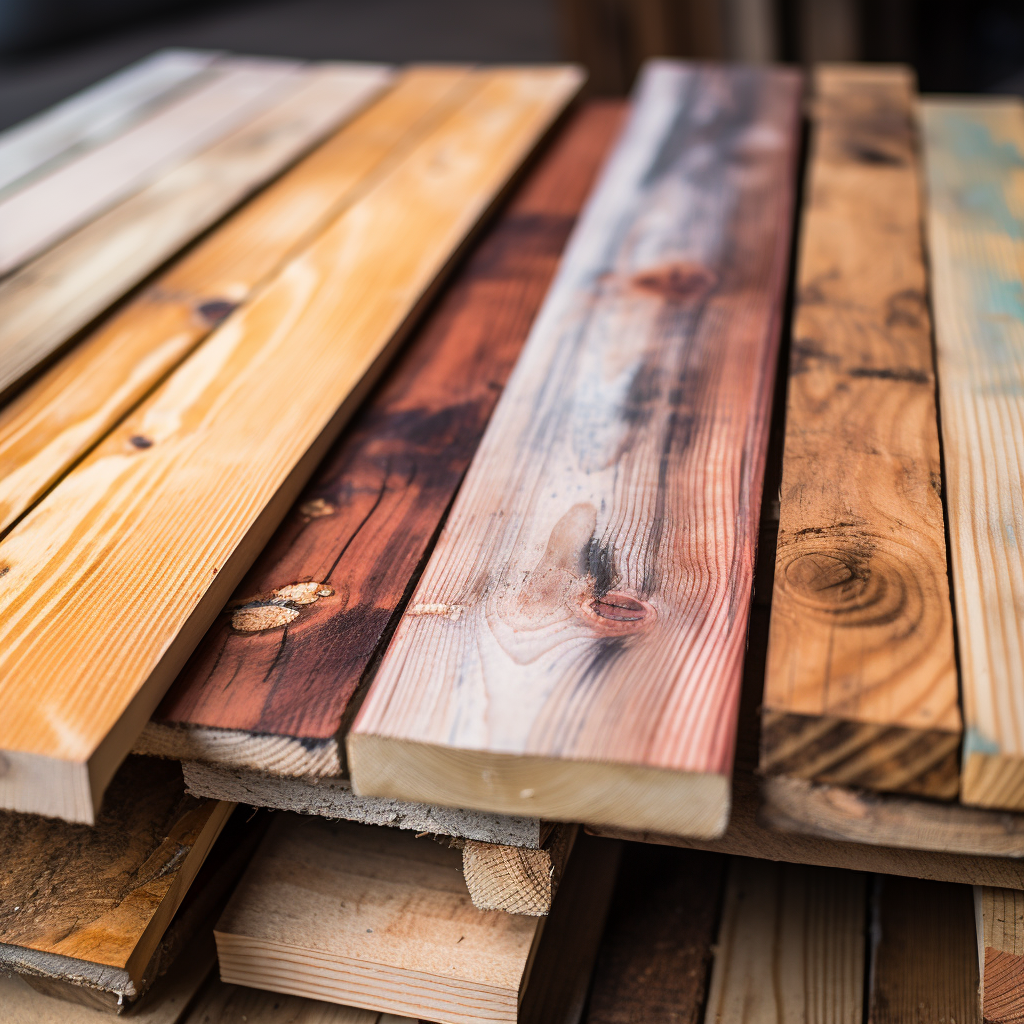You’ve found some pallet wood and you’re itching to start a DIY project. But wait! Is it treated? It’s crucial to know before you begin.
Understanding markings, recognizing treatment signs, and knowing health risks are key.
Let’s dive into how to tell if pallet wood is treated.
Key Takeaways
- Pallet wood can be crafted from pine, oak, or mixed hardwoods, each with unique properties.
- Understanding pallet wood markings, such as country codes and treatment logos, helps ensure safe choices in DIY projects.
- Treated pallet wood often contains harmful chemicals that can be hazardous to health.
- Methods to determine if pallet wood is treated include checking for tint, markings, or using untreated wood for safer options.
Understanding the Basics of Pallet Wood
Understanding the basics of pallet wood is a crucial step in mastering woodworking using these wood materials.
Typically, pallet wood is crafted from pine, oak, or a mix of different hardwood species. Each type possesses unique properties, impacting the wood’s strength, durability, and appearance.
Pine is soft, making it easy to work with, but it’s less resilient than hardwoods. Oak, on the other hand, is incredibly durable and rich in grain detail. Mixed hardwoods are repurposed from a variety of sources, offering a diverse range of textures and hues.
Pallet wood uses are boundless, from furniture to decorative items, due to its rustic charm. However, always ensure the wood isn’t treated with harmful chemicals before using it.
Decoding the Markings on Pallet Wood
Your understanding of the markings on pallet wood is crucial, for it can reveal the wood’s origin and treatment history.
Stamp interpretation plays a significant role. Typically, you’ll find a code stamped onto the wood. A country code, such as ‘US’ or ‘GB’, indicates where the pallet was manufactured.
The IPPC logo signifies that the wood has been treated and is safe to use. If you see ‘HT’, it means the wood has been heat-treated, not chemically treated. ‘MB’ indicates it’s been treated with Methyl Bromide, a chemical you’d want to avoid.
Understanding these markings not only gives you a glimpse into pallet history but also ensures you’re making safe and informed choices in your DIY projects.
Always remember, knowledge is power, especially when it’s inscribed on wood.
Health and Safety Concerns Related to Treated Pallet Wood
Treated wood often contains harmful chemicals, and understanding the treatment chemicals impact on your health is crucial.
Exposure can occur through inhalation, skin contact, or accidental ingestion while working with such wood. To mitigate these risks, always use personal protective equipment. That includes gloves, safety glasses, and a dust mask. This equipment protects you from direct contact and prevents inhalation of potentially harmful particles.
Moreover, it’s essential to work in a well-ventilated area to further reduce exposure. Lastly, never burn treated wood as it can release toxic fumes. Knowledge and precaution can ensure your safety while working with treated pallet wood.
Methods to Determine If Pallet Wood Is Treated
Although it’s not always easy, you can identify if pallet wood is treated by looking for specific markings and colorations. These Treatment Identification Techniques rely on your keen observation.
Treated wood often has a green or yellow tint, and you’ll also find a stamp with codes indicating the treatment method. If it’s untreated, there won’t be any marking.
Now you might ask: ‘Why bother with untreated wood?’
Well, Untreated Wood Benefits are numerous. You’re dealing with a material that doesn’t have any potentially harmful chemicals. It’s safer for indoor projects, especially if you’re planning to use it for furniture, or toys.
Plus, it’s better for the environment.
Handling and Working With Treated Pallet Wood Safely
When working with treated pallet wood, it’s crucial that you wear the right protective gear to ensure your safety. Protective Gear Essentials include safety goggles, durable gloves, and a mask to protect against dust and potential toxins.
As you apply Pallet Disassembly Techniques, remember that treated wood often contains chemicals that can be harmful if inhaled or contacted directly.
Before you begin, it’s important to know if your pallet wood is treated. Look for signs such as a greenish tint or specific stamps that indicate treatment. If it’s treated, work in a well-ventilated area to mitigate risks.
Always prioritize safety when handling treated pallet wood. You’re not only protecting yourself but also ensuring a successful and safe woodworking project.


Leave a Reply